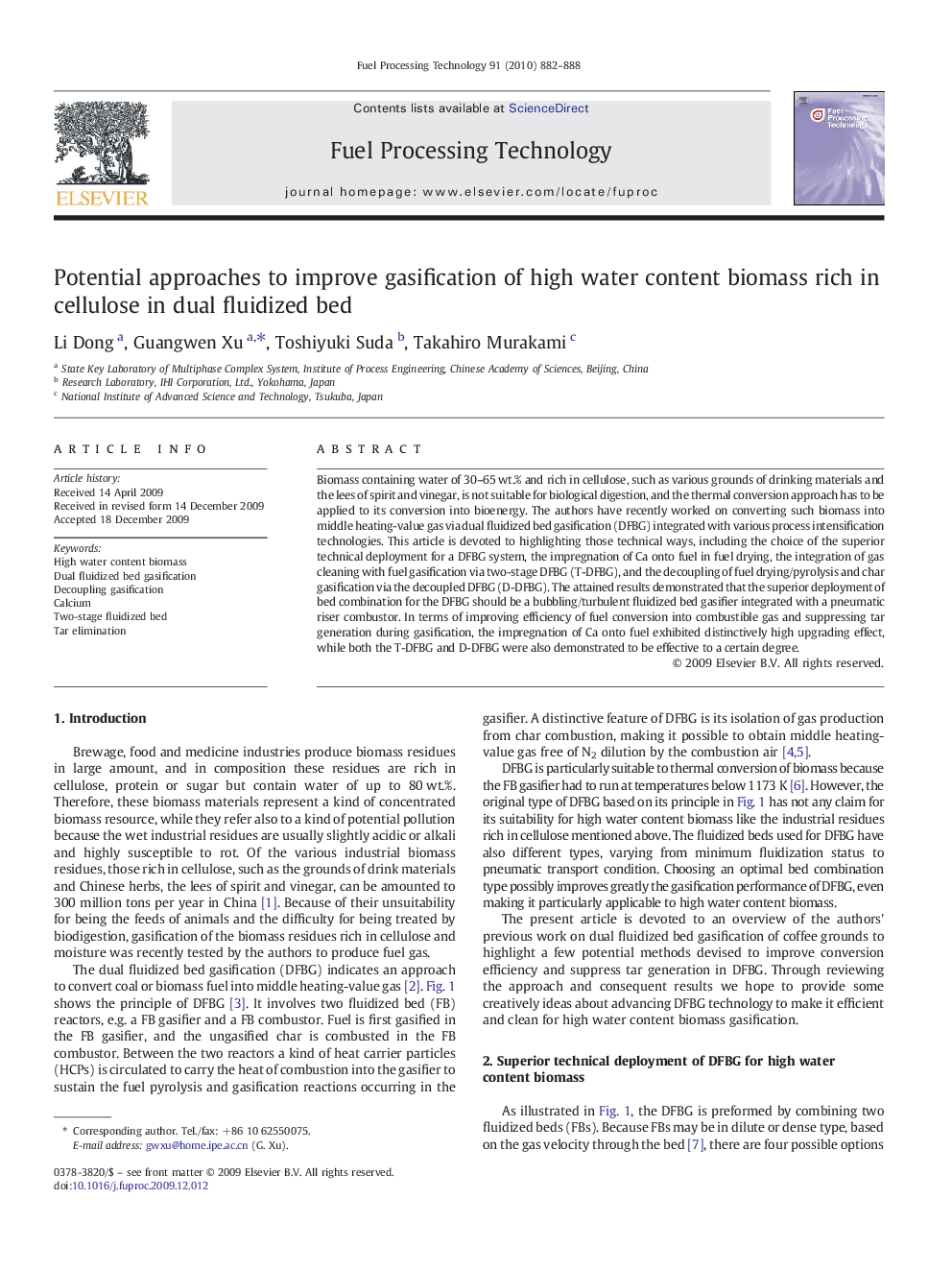| Article ID | Journal | Published Year | Pages | File Type |
|---|---|---|---|---|
| 211158 | Fuel Processing Technology | 2010 | 7 Pages |
Biomass containing water of 30–65 wt.% and rich in cellulose, such as various grounds of drinking materials and the lees of spirit and vinegar, is not suitable for biological digestion, and the thermal conversion approach has to be applied to its conversion into bioenergy. The authors have recently worked on converting such biomass into middle heating-value gas via dual fluidized bed gasification (DFBG) integrated with various process intensification technologies. This article is devoted to highlighting those technical ways, including the choice of the superior technical deployment for a DFBG system, the impregnation of Ca onto fuel in fuel drying, the integration of gas cleaning with fuel gasification via two-stage DFBG (T-DFBG), and the decoupling of fuel drying/pyrolysis and char gasification via the decoupled DFBG (D-DFBG). The attained results demonstrated that the superior deployment of bed combination for the DFBG should be a bubbling/turbulent fluidized bed gasifier integrated with a pneumatic riser combustor. In terms of improving efficiency of fuel conversion into combustible gas and suppressing tar generation during gasification, the impregnation of Ca onto fuel exhibited distinctively high upgrading effect, while both the T-DFBG and D-DFBG were also demonstrated to be effective to a certain degree.
